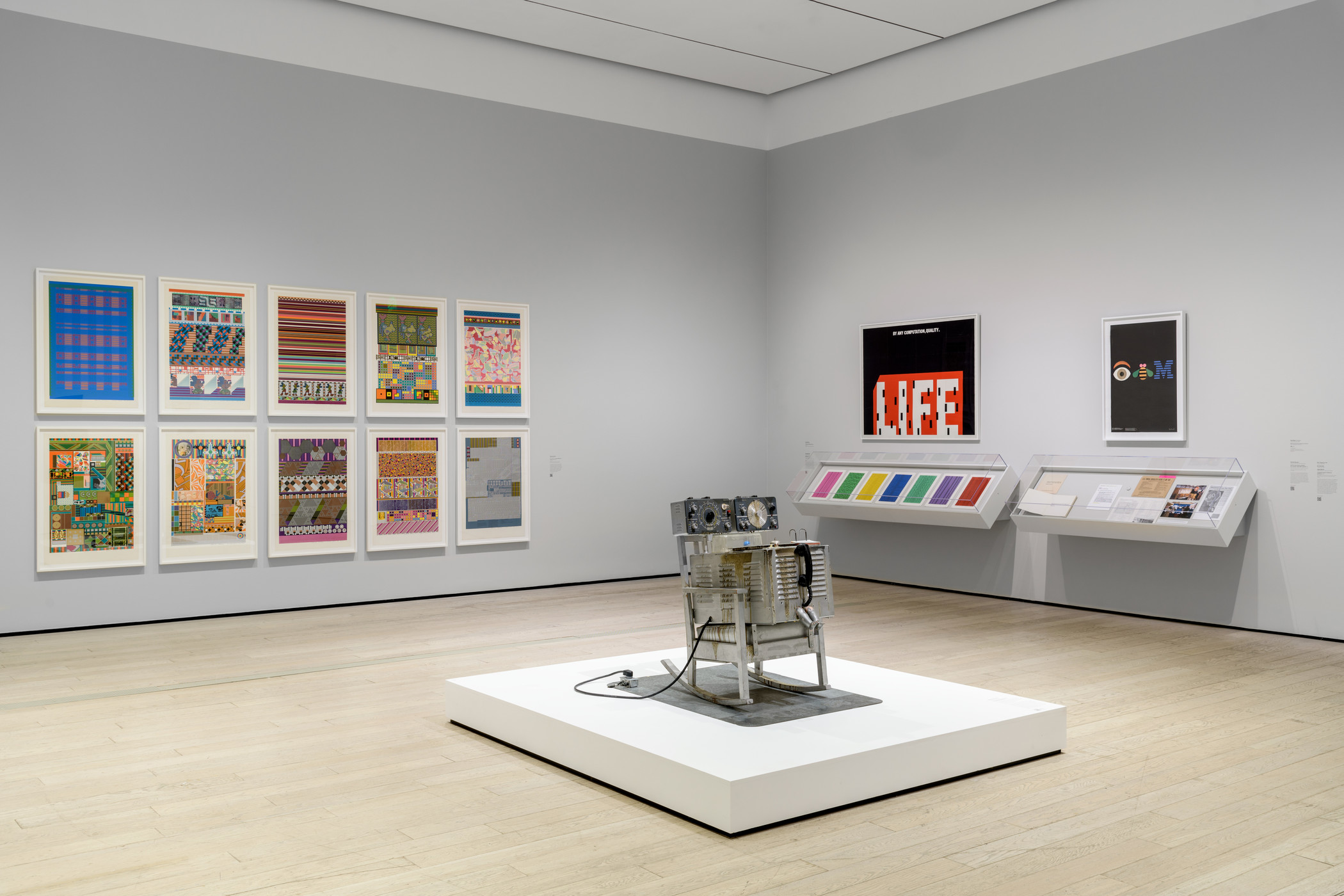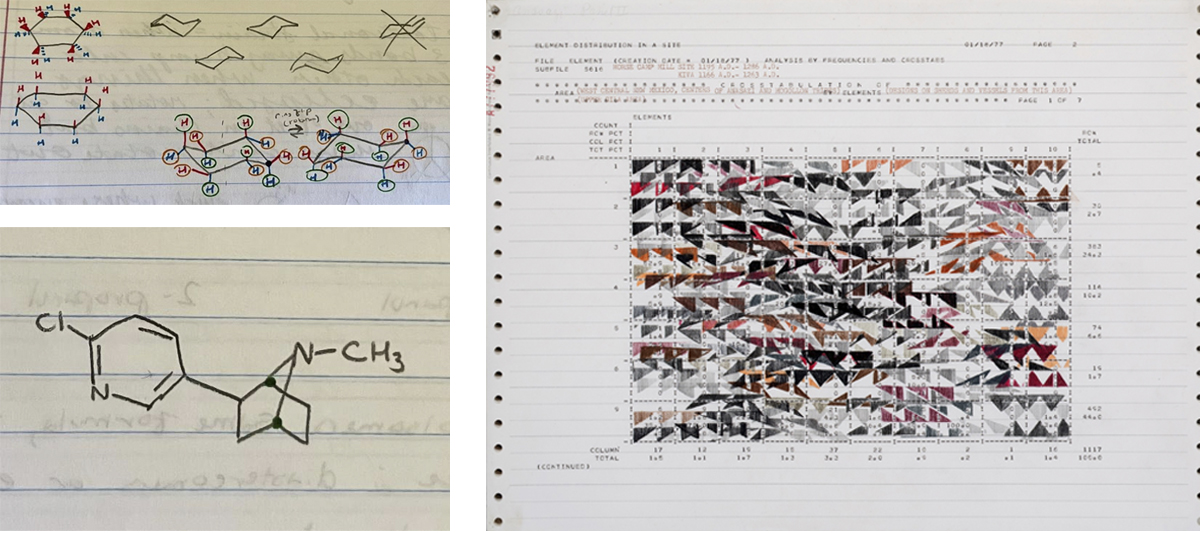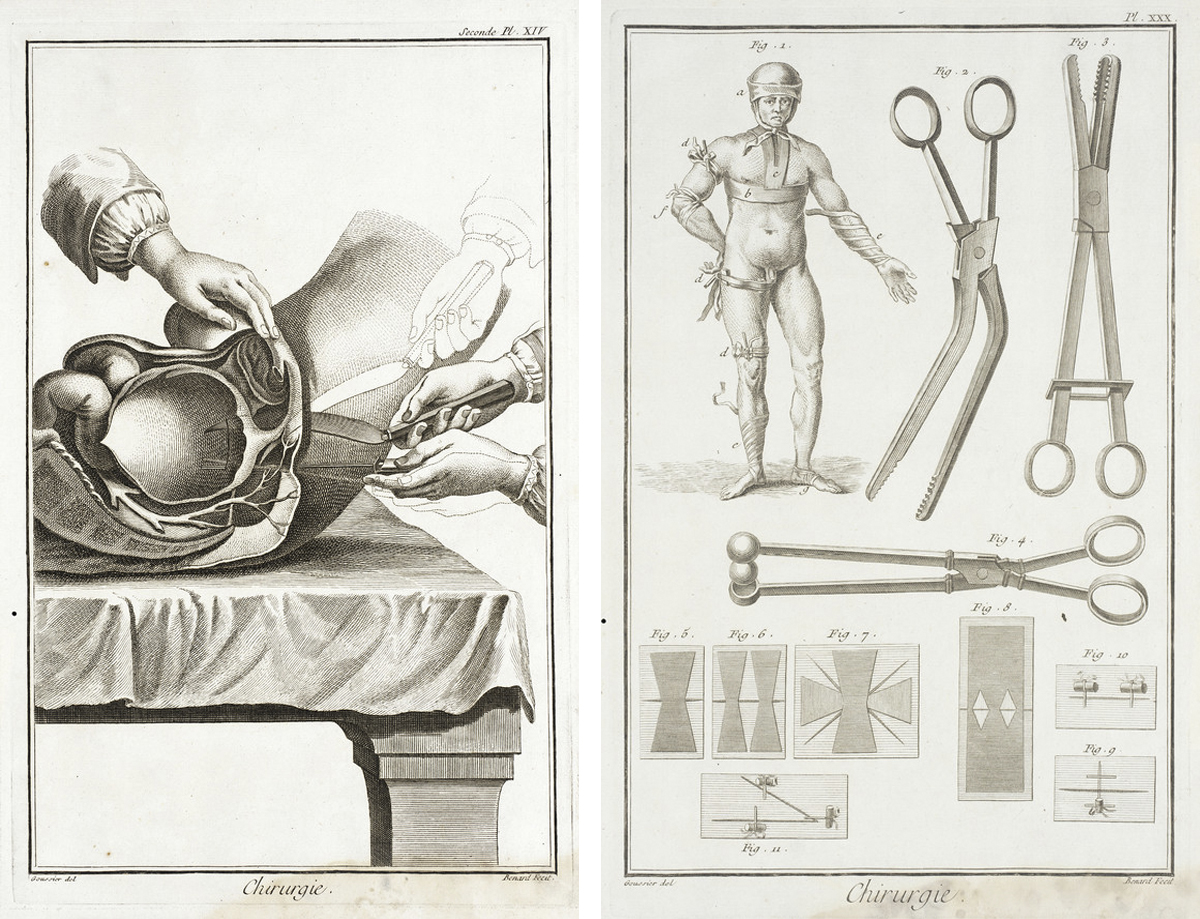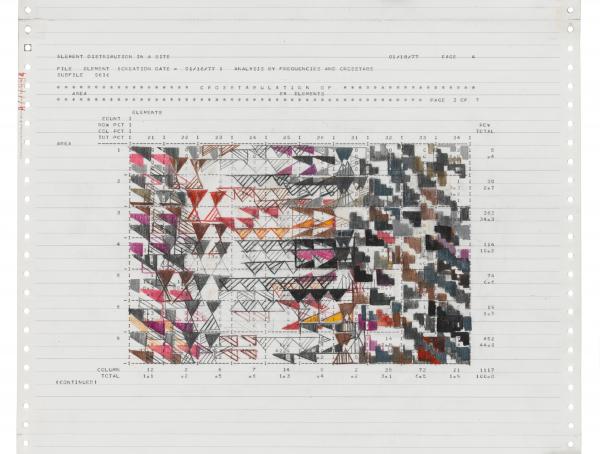Science and art are often regarded as completely separate disciplines that have nothing to do with one another, symbolizing the divide between logic and emotion. But art and science couldn’t be more interconnected, from the creation of an artwork to the process of conserving and displaying it for years to come. Art and science exist in a mutualistic relationship, a symbiosis. This relationship was a major focus of my internship in the Conservation Science department of LACMA’s Conservation Center in spring of 2023. My job was to find the ties that bind the art in LACMA’s extensive collection to the chemical world, and bring them into focus in order to strengthen LACMA’s ability to care for their art.

Ultimately, everything in the known universe, living and non-living, breaks down to chemistry and physics and the interplay between the two. Every beautiful thing that allows human beings to see art all around us is made up of chemicals and supported by physics. All art, beyond aesthetics, is an artist finding a way to combine chemicals to form larger sensory elements that work with and against their physical environment. Even within a digital environment, science is the basis of creation. No digital art could exist without computer science and the physical components that make up computers, as exemplified in LACMA’s recent exhibition Coded: Art Enters the Computer Age, 1952-1982.
The connection between science and art not only exists in a one-way stream allowing science to form the backbone of art—art is also essential to science. From artistic renderings of cells to free-body diagrams, the study of almost all sciences requires the drawing of diagrams and the ability to analyze them to determine meaning. I often find myself comparing the interpretation of data to finding constellations in the night sky: a game of connect-the-dots that gives order and meaning to the vast and unknowable universe. Scientists gain a unique ability to see the imperceptible through the creation of a visual language seeking to represent the invisible fabric of the world. They gain the ability to draw a collection of lines that symbolize a molecule or a series of arrows depicting a projectile object’s movement. Anyone who has taken an organic chemistry course can attest that, at the very least, you attain a mastery of drawing hexagons.

The argument could be made that diagrams cannot be considered “art” in a traditional sense. However, a narrow definition of what is and is not art limits the scope of creation and is antithetical to many contemporary ideas of “art.” Besides, museums like LACMA house diagrams like Robert Bénard's prints from the book L'Encyclopédia ou dictionnaire raisonné des sciences, des arts et des métiers (Encyclopedia, or a Systematic Dictionary of the Sciences, Arts, and Crafts) (1751–86) in their collection.

Outside of forming the base of each other’s disciplines, art and science are connected in practice in both public and private collections through the field of art conservation: the discipline of using science, particularly chemistry and physics, to preserve artwork for as long as possible in a condition aligned with the artist’s intent for the work. Conservators are trained to stabilize objects and advise on their storage and display in order to preserve them for years to come. They are able to prevent future damage or to correct issues that had not been predicted or considered by drawing on modern scientific research.
Chemistry within conservation labs is slightly different from the laboratory or academic chemistry that people typically think of when they envision a chemistry lab. Science in the conservation field deals both with the creation and selection of materials for use in art objects, and with whole objects that have already come to fruition. For existing objects, they may be a single entity in a combination of (not necessarily) compatible chemicals, which may or may not be known to anyone but the original artist, and maybe not even by them. Traditional chemistry tends to focus more on single molecules or the chemicals within a single component of a larger object to determine their function and behavior as a singular molecule. Conservators and scientists have to contend with how the different compounds within a work interact with one another and cannot remove a component from the larger work in order to study its behavior or achieve a desired result. Often academic chemists have the option of deconstructing a larger entity through purification or other methods to retrieve and work with their compound of interest, but conservators and conservation scientists rarely have that luxury.
The ability to study a substance on its own is a major factor in the importance of reference collections within conservation laboratories and having usable data in a searchable format from these collections. This gives the conservator and conservation scientist the ability to separate a single facet of an item from its larger context and environment to see how it behaves in isolation. As an intern in the Conservation Science department of LACMA’s Conservation Center, my task was to create one such database for LACMA’s Conservation department to use in conjunction with their own reference collection.
In February of my junior year of university, I began working in LACMA’s Conservation Center, where I became responsible for performing spectroscopic analysis and creating a database for the museum’s reference collection. There, I was able to use everything I learned making databases of ancient lamps in my university Archaeology Center and everything I had learned about spectroscopy in my chemistry curriculum and in my work in Dr. Jonathan Ryan Hunt’s research lab at Loyola Marymount University. In my internship in the Conservation Center, I took on a pet project analyzing the dyes in the collection, as my passion for fashion (which I had previously explored in a textile conservation course) never truly dissipated. The examination of the dyes and other reference materials using spectroscopy gave the Conservation Center the ability to clearly see the chemical properties of these materials and, by extension, the chemical properties of art objects made using the materials I analyzed. With the spectra produced in the Conservation Science lab, I am able to connect the dots of the constellation made from the materials in LACMA’s collection. Every day that I spend in the lab at the Conservation Center solidifies my choice to pursue a career in conservation. I truly couldn’t be more fortunate to get to do exactly what I love every day of my life.



